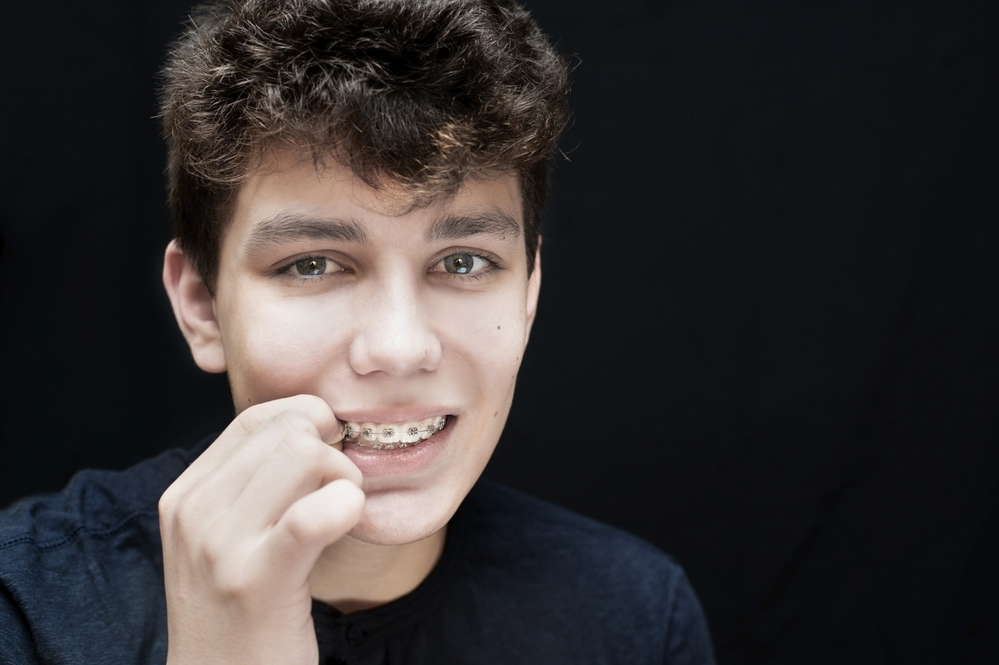Braces are one of the most common orthodontic treatments in the San Tan Valley — but this isn’t atypical. In fact, about 4 million people across the United States wear them. Some patients require the use of rubber bands, but others don’t. When do you get rubber bands for braces and what do they do?
What Is the Purpose of Rubber Bands for Braces?
Metal braces use brackets and wires to apply pressure to teeth to shift them into the desired alignment gradually. Rubber bands attach to the small metal hooks on the brackets of your braces and apply additional pressure to your teeth.
Your orthodontist may use rubber bands to apply extra force to specific areas of your mouth to achieve a proper bite and a beautiful smile. Rubber bands can help treat jaw misalignments such as:
- Overbites
- Crossbites
- Underbites
- Open bites
Rubber bands can also help adjust the spacing between or positioning of your teeth. Your orthodontist will place your rubber bands differently depending on which issues need correction.
Horizontally placed bands help close spaces between teeth. Vertically placed bands can correct an open bite. If you have a crossbite, the bands may cross over your front teeth.
At What Stage of Braces Do You Get Rubber Bands?

Many orthodontists wait until later in your treatment to use rubber bands. Peterson Family Ortho uses rubber bands from the start.
This technique allows for more efficient treatment and a more beautiful curvature of your smile.
Do Rubber Bands Mean You’re Almost Done With Braces?
Because Peterson Family Ortho uses rubber bands from the beginning of the treatment, they do not mark the end of your treatment. However, the extra pressure the rubber bands provide can speed up the treatment process for some patients.
Every patient responds to treatment differently. Most patients will wear their braces from 18 to 22 months, but you may need yours for a longer or shorter period.
Some patients finish treatment in as little as six months. Patients with more complex issues may need as long as three years.
How Long Do Rubber Bands for Braces Last?
Rubber bands lose their elasticity over time. You will need to change your rubber bands when they wear out. Your orthodontist will explain when and how to change the bands.
Will Extra Rubber Bands on Your Braces Make Your Treatment Work Faster?
Adding extra rubber bands to your braces can cause teeth to shift more quickly due to the extra pressure. However, this is not a good thing.
Moving your teeth too fast can cause damage to your tooth roots, which can lead to tooth loss. Use rubber bands as directed by your orthodontist.
Can You Eat With Rubber Bands on Your Braces?
You can eat small items with rubber bands on your braces, but it increases the risk of damaging your braces or getting food stuck in them. Additionally, some foods can cause the rubber bands to wear out faster.
For these reasons, most orthodontists recommend removing rubber bands before eating. You may want to avoid sticky, hard, acidic, and crunchy foods because they could damage your braces.
Does Wearing Bands Cause Side Effects?
Some people experience discomfort when first getting rubber bands due to the additional pressure they apply on the teeth and jaw. You can take over-the-counter pain relievers until you get used to your braces.
Tell your orthodontist if you have a latex allergy. You may need synthetic bands to avoid an allergic reaction.
Can You Wear Rubber Bands on Your Braces While Sleeping?
To be effective, you must wear the rubber bands on your braces for at least 20 hours per day. As a result, you need to wear them while sleeping.
Generally, the only times you should remove the bands are when you are eating or brushing your teeth. Removing the bands for extended periods may lengthen your treatment time.
Can Rubber Bands on Your Braces Cause Tooth Loss?
Rarely, rubber bands can get lodged under the gumline and pull out a tooth. You can reduce the chance of this happening by carefully following your orthodontist’s instructions for inserting and removing the bands.
What If You Swallow Your Rubber Bands or Break Them?

If you break the rubber bands on your braces, replace them as soon as possible. It is a good idea to carry some extra rubber bands with you so that you can quickly replace any bands that break. If you run out, order a refill from your orthodontist.
Most of the time, if you accidentally swallow a rubber band, it will work its way through your digestive system without an issue. However, if you feel any discomfort, make an appointment with your doctor.
Can Rubber Bands on Your Braces Change Your Face Shape?
If you have a severe overbite or underbite, you may notice some small changes in the shape of your face as your braces and rubber bands correct the misalignment of your jaw and teeth. In most cases, these changes are not very noticeable.
How Can You Tell If Your Braces Are Working?
Because the changes to your smile are gradual, it may be difficult to see the difference from one day to the next. Take a photo when you first get your braces and then take another after a few months. You should be able to see the difference.
Your orthodontist will also check your progress at follow-up visits and make any necessary adjustments to your treatment. You may notice that your jaws and teeth feel a little achy or sensitive due to the pressure from your braces. You can take over-the-counter pain relievers to reduce your discomfort.
Where Can You Get Help With Your Braces?
Whether need more information about rubber bands for braces or you are ready to schedule an appointment for your orthodontic treatment in the San Tan Valley, Peterson Family Ortho can help. We provide world-class care in a relaxing, family-friendly environment.
Contact us today to schedule a free consultation.

